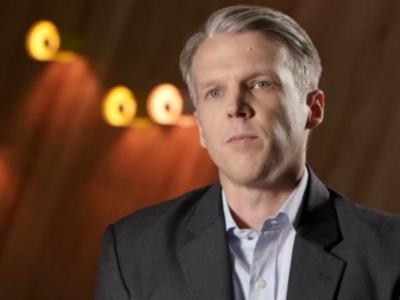SaaS apps support Hills' strategic moves

Businesses are increasingly favouring software-as-a-service (SaaS) applications, attracted by the promise of quick deployment, ease of use and maintenance, and low up-front capital investment.
But some motivations for SaaS are even more strategic. Look a bit deeper and the link between SaaS and strategy becomes clear, never more so than in marketing and sales.
For a variety of reasons, marketing has been the vanguard of SaaS adoption, firstly with the success of customer relationship management (CRM) systems from the likes of Salesforce.com, Oracle, and SAP, and more recently with a range of other applications supporting social media strategies, newsletter communications and campaign management, as well as other functions.
These applications share one crucial characteristic: they are growth-focused. Used well, they help companies find new prospects, increase conversions, boost sales and engagement and retain and build business with existing customers.
SaaS a growing delivery model for CRM says Gartner
In a recent report, analyst firm Gartner released new research showing 41% of CRM systems sold last year were SaaS-based, with Salesforce.com the dominant provider.
"High levels of end-user investment in digital marketing and customer experience initiatives were the primary growth drivers of the market in 2013", said Joanne Correia, a Gartner research vice president.
“CRM will be at the heart of digital initiatives in coming years. This is one technology area that will get funding because digital business is critical for companies to remain competitive.”
Gartner
But the study also showed marketers in different industries had different SaaS shopping lists.
Manufacturers, for instance, prioritised product and channel marketing while the communications, media and IT services industries focused on analytics. In the financial sector, customer service and cross-selling capabilities came to the fore.
In addition to big-ticket applications such as CRM, marketers are also looking at a wide range of specialised apps for managing email marketing (such as MailChimp), social media (HootSuite and a host of others), events (such as Eventbrite) or public relations (PRWeb).
But in some companies at least, SaaS adoption is far more than opportunistic: there is an intimate connection between such adoption and strategic efforts to transform the organisation.
Hills bets big on SaaS
For Australian manufacturer Hills, creator of the iconic Hills Hoist rotating clothes line, a major bet on Salesforce.com’s Sales and Service clouds was part of a wider strategy to reinvigorate a powerful brand by refocusing the company on profitable lines of business, mainly in communications and electronics, and uniting those businesses through a shared platform.
The shift to Salesforce.com was preceded by new managing director and CEO Ted Pretty scotching a more traditional on-premise CRM and ERP project after Hills had already invested A$18 million.

Jeff Arndt, Hills' group general manager of product, said that was necessary to support Pretty’s business strategy, dubbed 'One Hills', which intended to connect the different sales and service teams across the business – and to mobilise them.
Before adopting Salesforce.com, Hills had many subsidiaries interacting with the same clients and contacts without visibility of each other's activities. A single view of those contacts and interactions simply couldn't be achieved with the traditional on-premise, client-server system, Arndt said.
In March, at the Salesforce1 World Tour in Melbourne, Pretty said choosing Salesforce.com was a cultural rather than a technology decision and it delivered three major advantages: visibility, cultural change, and networking.
"We didn't have visibility on a day-to-day basis," he said
The cultural change was that "when you get visibility, you get accountability."
"So there is nowhere to hide," he said.
There have been structural changes to the business as well. Hills has sold many of its manufacturing businesses and is now building its communications and electronic services businesses into "trusted environments" such as health, education, and government, as well as the home.
Arndt said the programme of change was extensive and some people were set in their ways. It changed the way marketing, sales, systems, and accounts teams interacted.
"All of that had to change," he said.
SaaS and Salesforce.com allowed everyone to interact with the same set of data when serving clients and to see all those touch-points and interactions.
Arndt said employees now have one source of information from their cars, tablets, and other devices, through which they can track such interactions and the progress of sales campaigns. In addition, there are hundreds and thousands of companies developing applications that mesh with Salesforce.com, allowing Hills to benefit from all that investment.
Hills adopted two such platforms, ExactTarget and Pardot, both now owned by Salesforce.com. ExactTarget enables one-to one communications with customers and delivers a single view of the client while Pardot provides marketing automation, especially in lead generation and smoothing the often testy interaction between marketing and sales teams.
Arndt said collectively, Hills' SaaS investment delivered control to what was an unknown and uncontrolled state of client interactions across the company's brands. Hills can now "control the narrative" and build the story and the message for its target audiences.
Arndt said before the change, Hills was so one-dimensional in its approach that a step-change would have been simply following the rest of the market.
"The significant change in rebranding meant we needed to do better than that," he said.
The new tools get clients through what Arndt called a "learning journey", direct them to information they need, and track when they are ready to engage in a deeper, well-qualified conversation.
They can track contacts from many sources, from customer calls both inbound and outbound, and also from an array of other activities such as the scanning of badges at trade shows.
Channel like kids in candy store
Channel management is one area that has benefitted greatly.
"They are kids in a candy store in terms of their ability to construct a story, interact, and home in on what it is to have a 'sales quality' lead," he said.
This has traditionally been a source of much friction between marketing and sales, but the SaaS tools allow a seamless handover. Leads are more qualified and the customer's areas of interest and readiness to engage are better understood.
"We are only connecting them with sales when they need to be connected."
One bridge Hills has yet to fully cross is the one leading to social media marketing. Arndt said if the market tells Hills it should be there, that may happen in the next six to 12 months, and the current investment in SaaS applications will make such a move much easier.
There is still more to come — campaign management, for instance, is expected to be the biggest use-case for Hills' SaaS technology from 2015 and beyond, Arndt said.
But the success of any transformation depends on people.
"It is human nature that people will react to change in different ways," Arndt said. "More and more we are seeing a lot of excitement internally and externally about the 'One Hills' message."
"It's these tools that help us get very consistent on this message. Communication is so important."